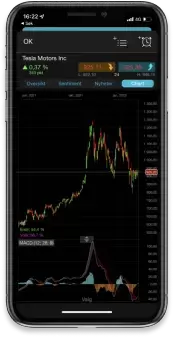The fear the global economy is slowing came to the surface yesterday as European and US stock markets declined sharply.
The DAX closed below 12,000, the FTSE 100 finished the session below its 200-day moving average, and the S&P 500 ended the day under 2,900.
Earlier in the week there was a raft of poor manufacturing reports from major economies around the world. The US ISM manufacturing reading dropped to its lowest level in a decade, and that was the standout report which triggered the fears about a slowdown. Trade talks between the US and China will continue next week. The trade spat has been going on for over a year, and when you take into account the dire manufacturing reports, it seems as if the damage has already been done.
There are major concerns about the health of the Germany economy, so when the German Institute lowered their 2019 growth forecast to 0.5% from 1.1%, and the 2020 outlook was lowered to 0.8% from 1.8%, it added to the bearish sentiment. Germany is the powerhouse of Europe and if it's slowing down, the remainder of the eurozone is likely to suffer too.
Stocks in Asia traded lower overnight as the US announced $7.5 billion worth of tariffs on EU goods like aircrafts as well as agricultural products. The move comes after the WTO found that the EU provided illegal subsidies to Airbus, and the international body said the US can impose levies on EU goods as a retaliation. In light of what has been going on this week, the timing of the tariffs is terrible.
The softer-than-expected ADP employment report added weight to the argument the US economy is slowing down. The September report showed that 135,000 jobs were added, while economists were expecting 140,000. The previous report was revised from 190,000 to 157,000. The US labour market is still in rude health, but there are worries it is coming off the boil.
For all the chatter about Brexit, sterling was relatively subdued yesterday given that Boris Johnson outlined his plans to take the UK out of the EU. The Prime Minister proposed that Northern Ireland should remain in regulatory alignment with the EU in terms of goods, argi business plus livestock. The Northern Irish assembly would need to support the terms and condition of the suggestions, and the DUP expressed their support for Mr Johnson’s proposal. The DUP are famous for saying no, so when they said yes, it was a positive omen.
The major losses in equity markets highlighted traders’ fears, which in turn helped the gold market. Dealers adopted a risk-off strategy, so gold was in demand. Gold has been broadly pushing lower since early September, but if it hold above $1,500, it might retest the $1,535 area.
Between 8.15am (UK time) and 9.30am (UK time) a number of major European economies will reveal the final reading of their services PMI reports for September. Spain, Italy, France, Germany plus the UK will post their figures, and economists are expecting 53.8, 50.4, 51.6, 52.5 and 50.3 respectively. The European services sector is holding up better than the manufacturing industry, but any signs of weakness is likely to hit weigh on stocks.
Eurozone PPI as well as retail sales will be posted at 10am (UK time). The PPI reading is expected to be -0.5%, on a monthly basis, while retail sales are expected to grow by 0.3%.
The US jobless claims report is expected to be 215,000, while the previous reading was 213,000. The will announcement will be at 1.30pm (UK time). The ISM non-manufacturing report will be revealed at 3pm (UK time), and traders are expecting 55, which would be a decline from the 56.4 level in August.
EUR/USD – remains in the wider bearish trend, and if the negative move continues it might target 1.0800. A snap back might encounter resistance in the 1.1100 area.
GBP/USD – has been pushing lower for over one week, but if it holds the 50-day moving average at 1.2255 could pave the way for 1.2400 to be retested. A move to the downside might bring 1.2200 into play.
EUR/GBP – while it holds above the 200-day moving average at 0.8835 the outlook should remain bullish, and 0.9000 might act as resistance. A break below 0.8786, might put 0.8724 on the radar.
USD/JPY – rebounded in last August, and if it holds above the 107.08 area – 50-day moving average, it might bring 109.31 into play. Should the wider downtrend continue it might retest the 106.00 area.
Disclaimer: CMC Markets is an execution-only service provider. The material (whether or not it states any opinions) is for general information purposes only, and does not take into account your personal circumstances or objectives. Nothing in this material is (or should be considered to be) financial, investment or other advice on which reliance should be placed. No opinion given in the material constitutes a recommendation by CMC Markets or the author that any particular investment, security, transaction or investment strategy is suitable for any specific person. The material has not been prepared in accordance with legal requirements designed to promote the independence of investment research. Although we are not specifically prevented from dealing before providing this material, we do not seek to take advantage of the material prior to its dissemination.







